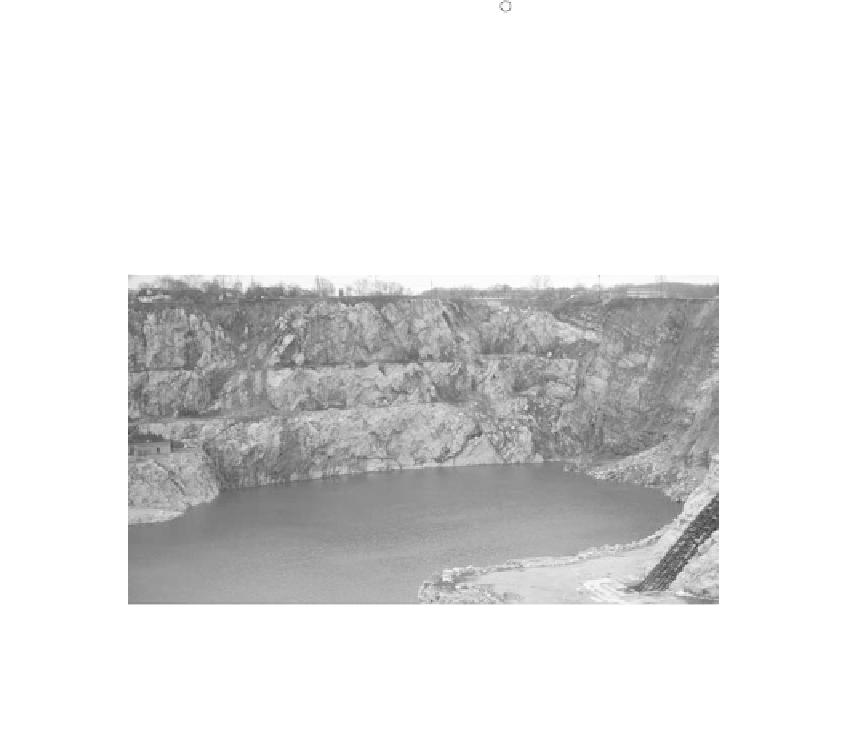Environmental Engineering Reference
In-Depth Information
Surface exposure
of limestone
Highly irregular
pinnacle interface
between soil and bedrock
Sinkhole
Open
void
1
Arch formed in dry, unconsolidated
soil debris by slow downward
movement of soil into limetone voide
2
Arch has migrated
almost to surface
3
Arch has migrated to surface;
collapse followed
FIGURE 10.17
Hypothetical section through a carbonate valley showing stages sinkhole development. (From Pennsylvania
Geological Survey,
Engineering Characteristics of the Rocks of Pennsylvania,
Pennsylvania Geological Survey, 1972.
with permission.)
FIGURE 10.18
Very irregular rock surface (pinnacles) and cavities in quarry wall. House in upper left gives scale (Ledger
dolomite, Upper Merion, Pennsylvania).
a geologic study that he made in the Gacka region of Yugoslavia, observed that solution
proceeded much more rapidly in heavily forested areas than in areas covered lightly by
grass or barren of vegetation. In an analysis he assumed that 60% of the annual rainfall, or
700 mm/year, entered the topsoil and that the entire amount of carbon dioxide developed
in the topsoil was used up in the process of solution, which removed the limestone at the
rate of 0.5 mm/year, or 1 cm in 20 years.
Collapse Causes Summarized
Collapse of limestone cavities can result from:
Increase in arch span from cavity growth until the strength is insufficient to sup-
port the overburden weight (
Figure 6.24)
●
Increase in overburden weight over the arch by increased saturation from rain-
fall or other sources, or from groundwater lowering, which removes the buoyant
force of water
●
Entry of granular soils by raveling into a cavity near the rock surface
●
Applications of load to the surface from structures, fills, etc.
●




